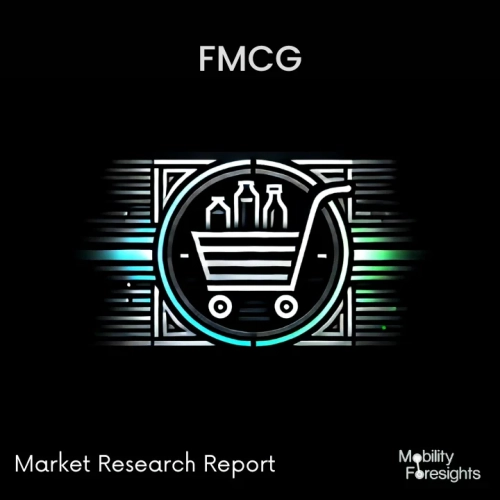
- Get in Touch with Us

Last Updated: Jul 17, 2025 | Study Period: 2024-2030
Saudi Arabia, like the other GCC nations, has a large GDP and a young, expanding population.The demand for juices, dairy products, and other foods and beverages is bolstered by these factors.

The government's emphasis on diversification and food sufficiency is anticipated to be the driving force behind the expansion of the food and beverage industry as economic conditions improve.
TheSaudi Arabia FMCG marketaccounted for $XX Billion in 2023 and is anticipated to reach $XX Billion by 2030, registering a CAGR of XX% from 2024 to 2030.
The COVID-19 pandemic is anticipated to have a negative impact on Saudi Arabia's economy. Due to COVID-19, Saudi Arabia's growth in real gross domestic product (GDP) is anticipated to slow, unemployment to rise, and current account balance to fall.
The global COVID-19 pandemic has altered lifestyles and trends;Saudi Arabia's FMCG industry was no exception.When it comes to their shopping habits, customers are expecting more convenience.
Due to issues with the supply chain, more than a third of Saudis surveyed reported switching to online shopping.In addition, consumers are considering alternatives that are healthier and more sustainable.
To reduce their impact on climate change, approximately half of survey respondents said they would likely cut back on dairy consumption or switch to alternatives like soy or soy milk.
Businesses faced challenges from more demanding customers, but they also presented growth opportunities.
After the Covid dip in April and May, FMCG volumes were just beginning to recover when Saudi Arabia's VAT was last increased to 15% in Q3 2020.
As they stocked up on their favourite brands and categories, consumers were trading up. As a result, a number of categories continued to "recover" in terms of volume; Promos had become more scarce due, in part, to issues with stock and supply.
In many categories, the average price per unit increased. The transfer of VAT to consumers had no immediate effect on volumes across all brands.After a few quarters, FMCG in general saw significantly positive value growth.
One of the biggest global industries is the FMCG (Fast Moving Consumer Goods) or Consumer Packed Goods (CPG) sector. Egypt and Saudi Arabia were the two countries in the Middle East and North Africa (MENA) region with the greatest overall consumer spending on food and non-alcoholic beverages.
The Gulf Cooperation Council (GCC) benefited from increased sales and earnings in the FMCG sector until recently. The market saw significant GDP growth and rapid population expansion. There were few regulations, targeted subsidies for particular industries, and no taxes like value-added tax (VAT). As a result, there was a period of minimal market competition, with many businesses enjoying respectable growth and favorable profitability.
Saudi Arabia shares characteristics with the other GCC nations, including a young, expanding population and a high GDP. These elements help to sustain consumer demand for dairy goods, juices, and other foods and drinks. The COVID-19 pandemic is lowering the unemployment rate in the kingdom.
It is anticipated that such progress will boost household earnings and consumer expenditure. After the epidemic, it was predicted that the size of the food and beverage business would increase.
The government's emphasis on diversification and food sufficiency is anticipated to be the main factor driving the expansion of the F&B sector over the coming years as economic conditions improve.
Due to problems with the supply chain, more than one third of Saudis surveyed said they had switched to internet shopping. Additionally, customers are thinking about more sustainable and healthful solutions.
| Sl. No | Topic |
| 1 | Market Segmentation |
| 2 | Abbreviations |
| 3 | Research Methodology |
| 4 | Executive summary |
| 5 | Potential Opportunities for Client in Saudi Arabia FMCG Market |
| 6 | Spends of Saudi Arabian Population in FMCG Product |
| 7 | Major Market Drivers For Saudi Arabia FMCG Market |
| 8 | Saudi Arabia FMCG Market Distribution Footprint - 2022 |
| 9 | Import Trends in Saudi Arabia FMCG Market |
| 10 | FMCG Manufacturing in Saudi Arabia - 2022 |
| 11 | Investments for FMCG Manufacturing in Saudi Arabia |
| 12 | International Relations of Saudi Arabia and Impact on FMCG Market in Saudi Arabia |
| 13 | Impact of Rising Inflation on Saudi Arabia FMCG Market |
| 14 | Difference between Global FMCG Market and Saudi Arabia FMCG Market |
| 15 | Market Size, Dynamics And Forecast By Product Type, 2024-2030 |
| 16 | Market Size, Dynamics And Forecast By Distribution Type, 2024-2030 |
| 17 | Market Size, Dynamics And Forecast By Major Cities, 2024-2030 |
| 18 | Competitive Landscape Of FMCG Market In Saudi Arabia |
| 19 | Market Share in Saudi Arabia FMCG Market |
| 20 | Recent M&A in the industry |
| 21 | Growth strategy of Major Players |
| 22 | Company Profiles |
| 23 | Conclusion |